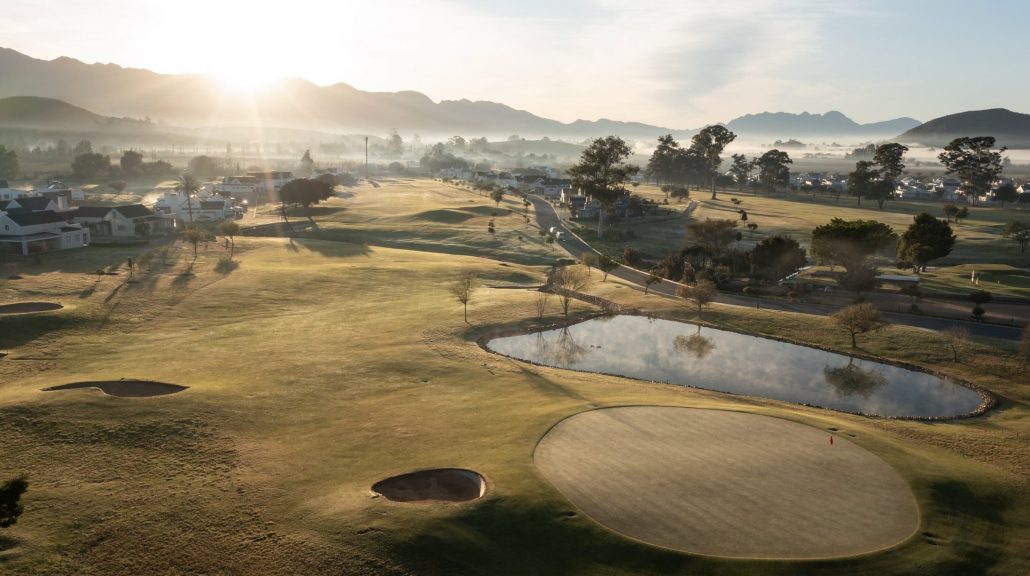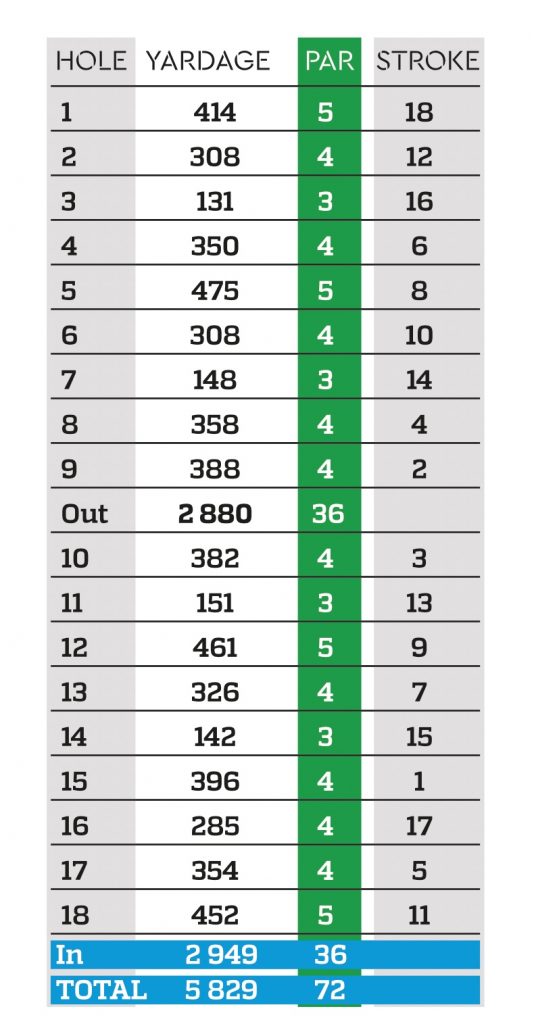Ideally situated beside the bustling town of Robertson, Silwerstrand Golf and River Estate offers the perfect golfing getaway, writes MARK SAMPSON.
Known as ‘The valley of wine and roses’, Robertson has several well-kept secrets.
While farming and wagon building is how the town originated prior to the Anglo-Boer War, ostrich farming became the next big thing. After World War I, this industry also collapsed and the area turned to general farming of livestock.
Wine and fruit farming began in the same period and is now very much the core industry within the area, with numerous famous wines originating from the valley.
Unlike many of the other smaller towns in the area, water is not a problem as the Breede River supplies water throughout the year to the farmers and town.
As well as being at the heart of the famous wine route, Route 62, the town is also host to the oldest skydiving club in South Africa: the Western Province Sport Parachute Club, Skydive Robertson, founded in 1972.
Silwerstrand Golf and River Estate can be found on the periphery of Robertson when arriving from Worcester on the R60. The 168ha property is made up of three major areas – the golf course, the village and the riverside – and contains a total of 406 ervens.
Several recent changes to the management team of the estate means the estate and golf course have been set on a new trajectory. Johan Hugo is now the general manager of the entire estate, including the course. Arriving from Stellenbosch with years of experience
in the construction sector, he comes with a vision for both the estate and course.
He will be assisted with this vision on the course by ‘new’ greenkeeper Diaan Louw. Diaan started his career at Langebaan in 2007 and worked his way through the ranks at Hermanus, Steenberg, Vulintaba and Parow before being lured back to Silwerstrand.
A 10-year plan has been formulated to elevate the course’s playability status within the golfing fraternity. Projects include a certain amount of greenside reshaping and bunker changes at the hands of Robert Richardson. The actual bunkers – which currently have the modern-day revetting (material tubing) – will have that removed to give them a more natural look.
Along with enhancing the course with hundreds of indigenous trees suited for the Karoo-like environment, the rough is also having certain grass species removed. A secondary rough will also be created to enhance the contouring and general look of the course. The greens will undergo a strong top-dressing regime over the next three seasons to reduce their spongy nature and increase longevity.
This is by no means a slur on their current condition as they rival the best greens in the Cape for putting and smoothness due to the bentgrass surface. In the last two years the annual rounds have increased from 12k to 15k per year, indicative of the growing status of the course.
The goal is to increase this while also showcasing the playability and proximity of the estate to Cape Town.
Robertson is just over an hour-and-a-half drive from Cape Town. The course and estate are well placed to both host and accommodate large tournaments and golf tours.
What is not well documented is that the area does not incur the wrath of the historically wet Cape winters. Yes, it gets cold due to the surrounding mountain ranges but rainfall is far less and with the amazing drainage the course exhibits, its year-round playability can be taken advantage of.
With the mighty Breede River running along the boundary of the estate, the course always has a bountiful supply of water to ensure its year-round conditioning.
With all that the town offers in the form of vineyards, it really is the ideal location for a weekend, or even midweek getaway.
You can expect a well-maintained parkland layout with some well-placed bunkering. Many of the greens are raised with steep drop-offs meaning club selection is important for approach shots. When the green is missed, your short game needs to be sharp. The course is not demanding on length with the par threes on the short side, averaging 143m.
The opening hole of 414m is a nice warm-up, allowing you to ease into the round. It’s a par five – reachable in two with the main danger left in the form of the irrigation canal that runs through the estate. Two bunkers right of the fairway must be avoided at the bend of this right-to-left dog-leg. The canal skirts the left of the green and two bunkers front left, and right, await those trying to roll up on to the green.
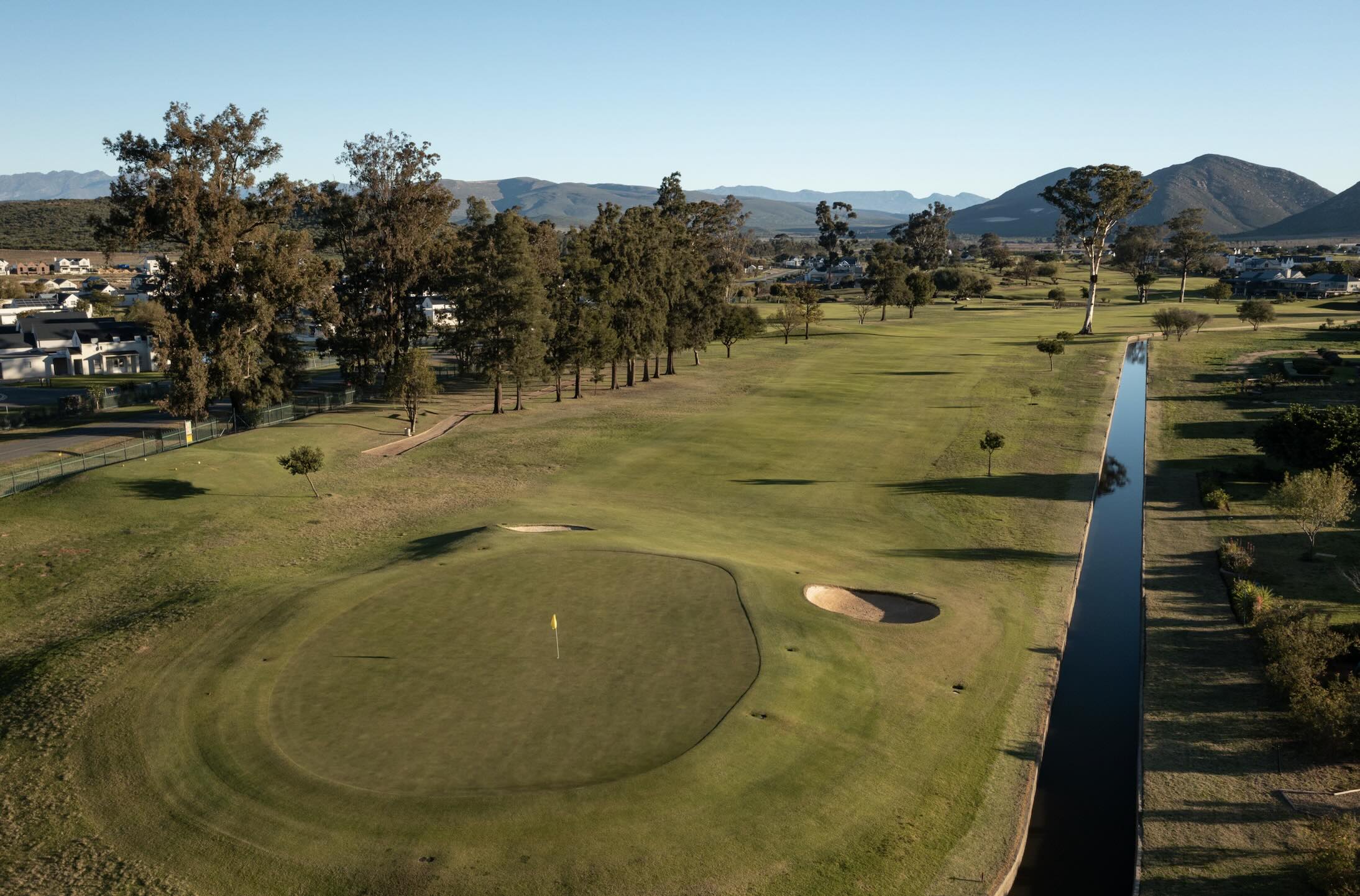
One then turns back to the clubhouse for a short par four of 308m and the first par three of the day with the green sitting beside the clubhouse.
The course then starts to bare its teeth with a 350m par four which generally plays into any sort of wind in the area. Out of bounds down the entire left-hand side, albeit it well away from the fairway, still needs to be kept in mind. A decent drive will leave a mid-iron in and greenside a water hazard on the right of the green is in play. A small bunker front left is the final key to this stroke six. The green is one of the larger on the course at 30m deep, so taking some extra club is advisable.
Next up, the 5th, the longest hole on the course spanning 475m and curving slightly from left to right. Four bunkers are randomly placed along the fairway with a fifth left front of the green. The stroke eight boasts the deepest green on the course, allowing the longer hitters to stay on its elevated surface.
After the par-four 6th, it’s the signature hole (below).
The closing two holes on the front nine are very much there to test the long-iron into greens.
The 8th is a lengthy par four of 358m. A water hazard up the right side is offset by two small bunkers left. The landing area is therefore tight as this hole rises to the green which is protected by a small bunker left and a larger one right. The green also has a strong slope from back to front, keeping the stroke true.
The 9th is a tough closing hole of 388m which is its main protection. Dial straight, finding the fairway should not be too hard with the main challenge coming with the approach. The green, at only 24m deep, is a small target with a long-iron in hand. A small bunker left front adds to the precision required in finding the surface.
The large clubhouse is divided into office admin space and the pro shop, on the left of the entrance, and the restaurant and bar to the right. A large veranda spills out over the putting green and small river flowing through the course. The well-stocked and priced halfway is set beside the 9th green.
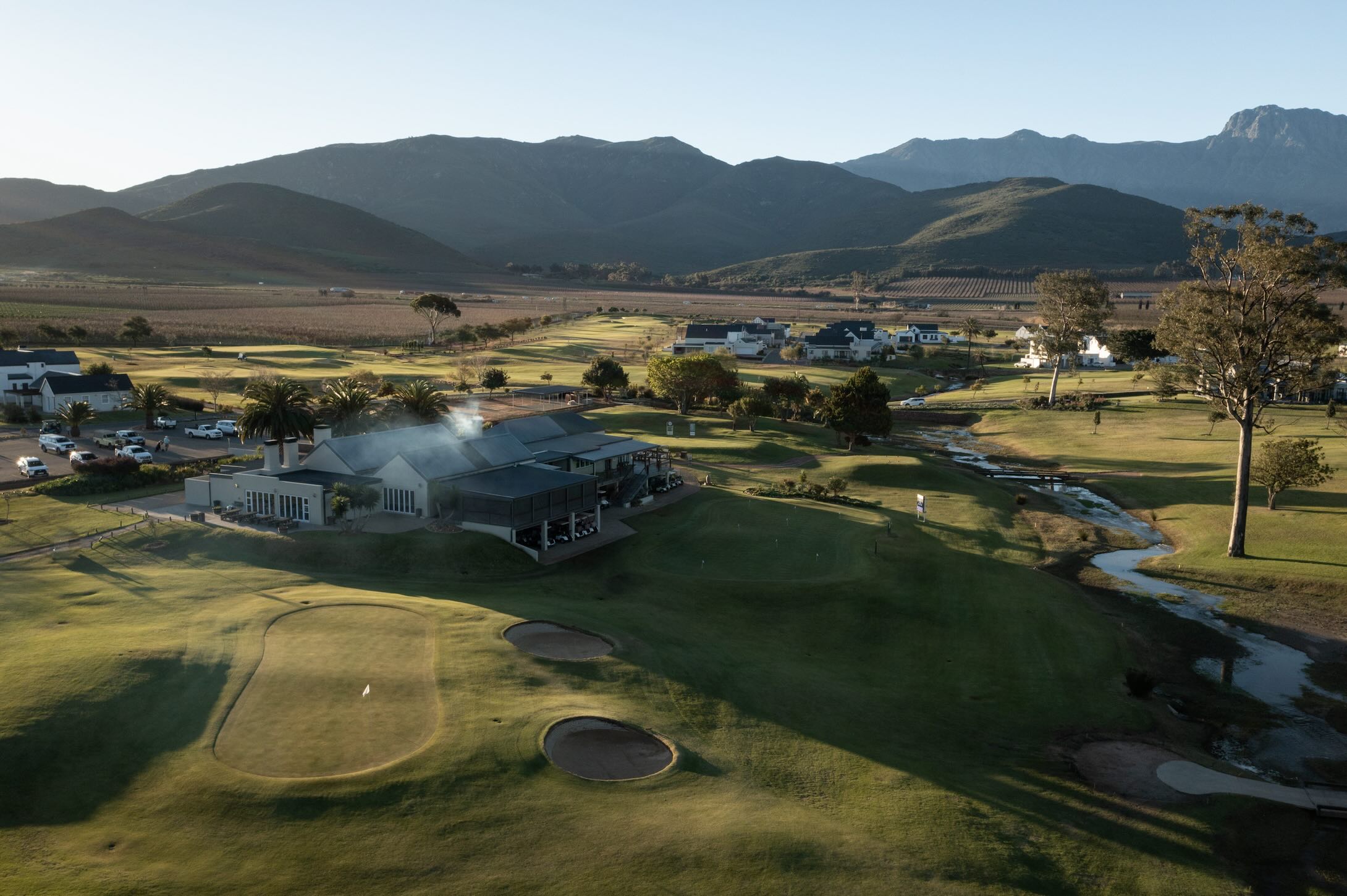
The back nine starts with a strong par four of 382m. A straight hole from tee box to green, the landing area is nevertheless riddled with danger. Water left of the fairway and three bunkers on the right are all in play. If these are safely navigated, the 29m-deep green with no bunkers is accessible.
The 12th is the first par five of the back nine and leads you to the high point of the course. The neighbouring citrus farm forms the out of bounds left. Four bunkers along the right of the hole leave little room for error. Greenside another six bunkers surround the raised green.
The 13th is one of the best holes on the course due to its clever routing. A short par four of 326m riddled with danger. As the hole moves from left to right, two bunkers on the left elbow await while a water hazard right stops a bailout there. As the hole plays downhill, be sure to get your yardage correct so as to not run into the bunkers. One of the smaller greens on the course makes for a difficult target, with another water hazard right and bunker left. This stroke seven needs the utmost respect.
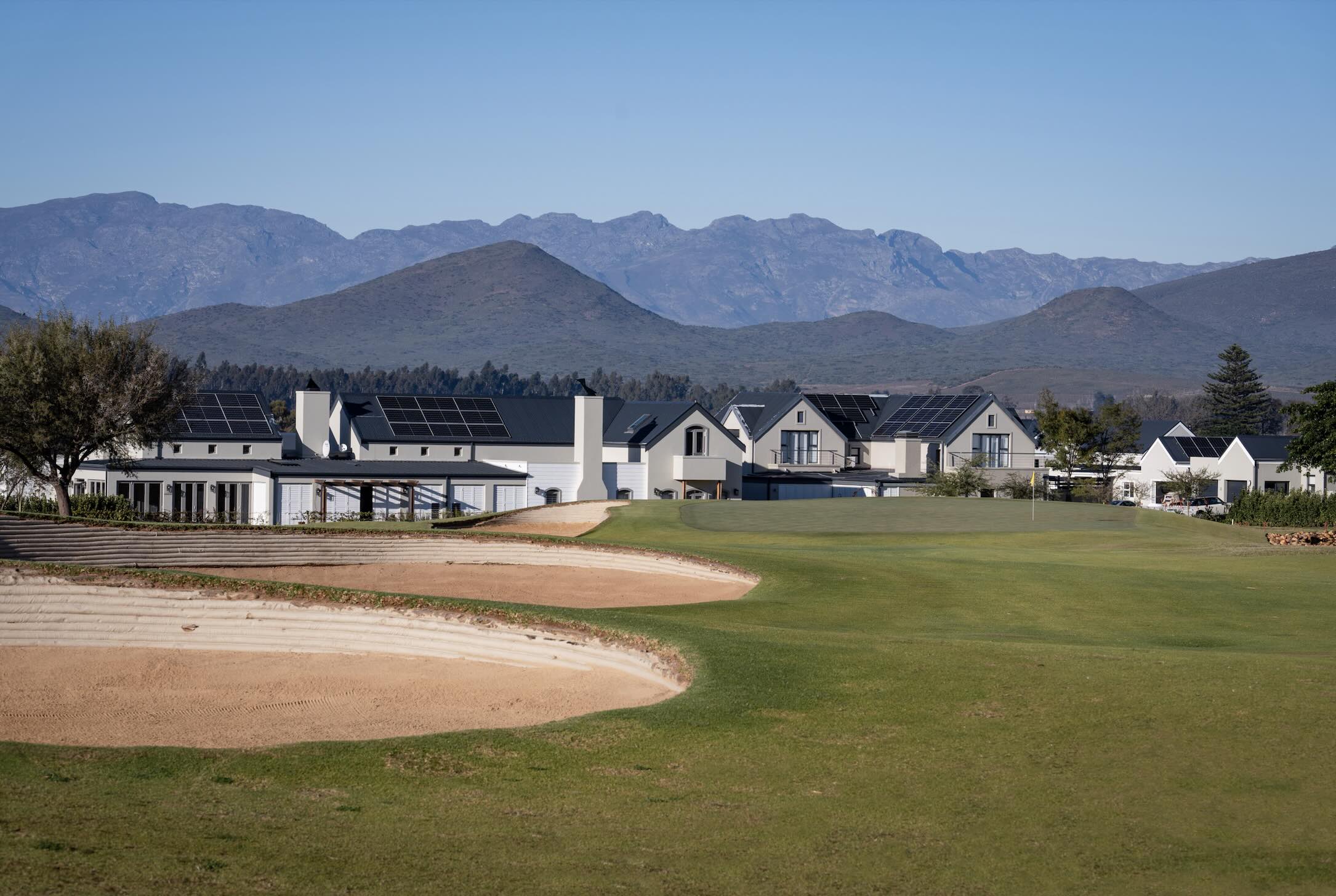
The short 14th is followed by the stroke one at Silwerstrand: a par four of 396m with out of bounds on the left and four bunkers splattered in the landing area off the tee. One small bunker left protects the raised green.
Holes 17 and 18 both have a small river flowing through the fairway. Careful distance management is needed on both.
The closing hole is a par five of 452m; a small river crossing the fairway, seven bunkers and a water hazard left of the green all add to the adventure of the stroke 11. Going for the green in two is like threading a needle. A good risk-reward closing hole and fitting of this friendly and very playable course.
SIGNATURE HOLE
7th hole, par three, 148m
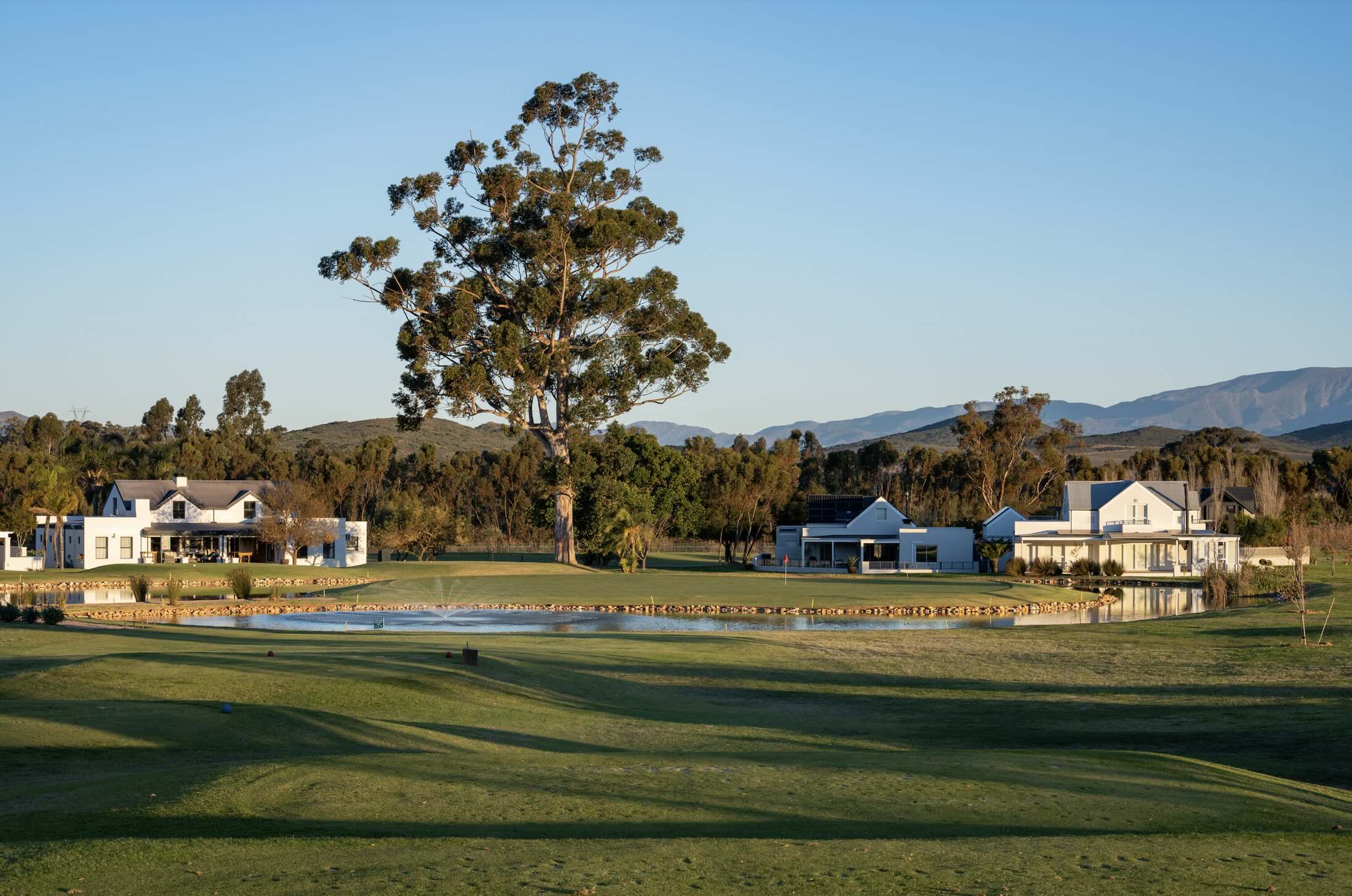
The signature hole at Silwerstrand is the downhill par-three 7th. At 148m, it only requires a short-iron for most. The length by no means makes for a pushover of a hole, though – quite the contrary. The green is wide from left to right, but a mere 19m deep, meaning club selection needs to be spot on.
The fact that it is surrounded by water means a watery grave awaits a mis-club.
The hole also plays downhill, emphasising the need to work out the yardage accurately. One can factor in half a club less for the drop in elevation. If the wind is up, it is generally a crosswind which is the final part of the puzzle when choosing the club and avoiding the water.
The centre of the green is slightly wider from back to front and is also raised at the back. Average golfers would be advised to make this area the target regardless of the hole location.
The centre of the green will leave you a great opportunity for a two-putt. The island green, which increases the intimidation of the hole, can lead to your swing tightening up. With that in mind, taking an extra club and swinging well within your limits is always advisable.
A solid strike not only ensures a better trajectory but also spin on the ball, allowing the best opportunity to stay on the bentgrass surface.
The stroke 14 may indicate an easy hole but the reality is a bogey or worse is much more likely than a birdie due to the green’s shaping. Rather go for a solid two-putt par, admire the beauty of the hole and move on without any damage to the scorecard.
GREENFEES
Members
R160 9 holes R250 18 holes
Scholars
R80 9 holes R150 18 holes
Affiliated Guests
R250 9 holes R450 18 holes
Non-affiliated
R390 9 holes R700 18 holes
Golf Cart
R220 9 holes R420 18 holes
ADDRESS
26 on Boulevard, Robertson, 6705
ROAD DISTANCES
Cape Town 159km
Gqeberha 626km
Bloemfontein 938km
Johannesburg 1,334km
Durban 1,519km
CONTACT DETAILS
Email: [email protected]
Phone: (023) 626 1090
Website: www.silwerstrand.co.za
– This article first appeared in the September 2024 issue of Compleat Golfer magazine.
Photos: Mark Sampson


